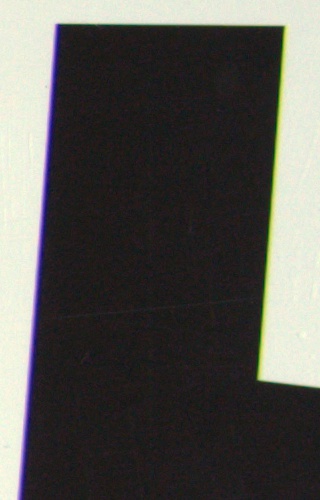Sony FE 28-70 mm f/2 GM
5. Chromatic and spherical aberration
Chromatic aberration
On the one hand you deal here with unique parameters; on the other hand the optical construction of the Sony FE 28-70 mm f/2 GM is simply studded with elements made of different variations of low dispersion glass. I admit that fact made us very curious how the lens would correct longitudinal chromatic aberration.Photos below show well that it manages it really well. You are able to notice any colouring only at the maximum relative aperture and in out-of-focus areas that are far away in the frame – green-blue behind the focus, slightly red before the focus. Still these features are not something that might make it more difficult to take photos in real life.
 |
Please Support UsIf you enjoy our reviews and articles, and you want us to continue our work please, support our website by donating through PayPal. The funds are going to be used for paying our editorial team, renting servers, and equipping our testing studio; only that way we will be able to continue providing you interesting content for free. |
- - - - - - - - - - - - - - - - - - - - - - - - - - - - - - - - - - - - - - - - - - - - - - - -
 |
Now let's check the correction of lateral chromatic aberration – graphs below present the results in this category on the edge of the APS-C and full frame.


Like in case of resolution, the 50 mm focal length is simply perfect, with results staying near a negligible level of 0.02%. The maximum focal length is on the second place, with aberration increasing on stopping down the lens and reaching values on the borderline between very low and low levels. On more distinct stopping down the CA approaches medium levels.
Most problems you see at the widest angle of view. What's interesting, they are more pronounced on the edge of the APS-C than on the edge of full frame. Still there are no reasons to be worried because on the edge of full frame these values are on the borderline between low and medium level and in case of the APS-C sensor they are medium.
| A7R IIIa, RAW, 28 mm, f/4.0 | A7R IIIa, RAW, 70 mm, f/5.6 |

|

|
Spherical aberration
First photos from this chapter don't show any noticeable focus shift effect at both focal lengths, presented there. Also the appearance of out-of-focus circles of light we got before and behind the focus don't show any more serious problems with spherical aberration. They don't feature any essential differences and it means spherical aberration is kept firmly in check.
| A7R IIIa, 50 mm, f/2.0, before | A7R IIIa, 50 mm, f/2.0, after |

|

|
| A7R IIIa, 70 mm, f/2.0, before | A7R IIIa, 70 mm, f/2.0, after |

|

|






